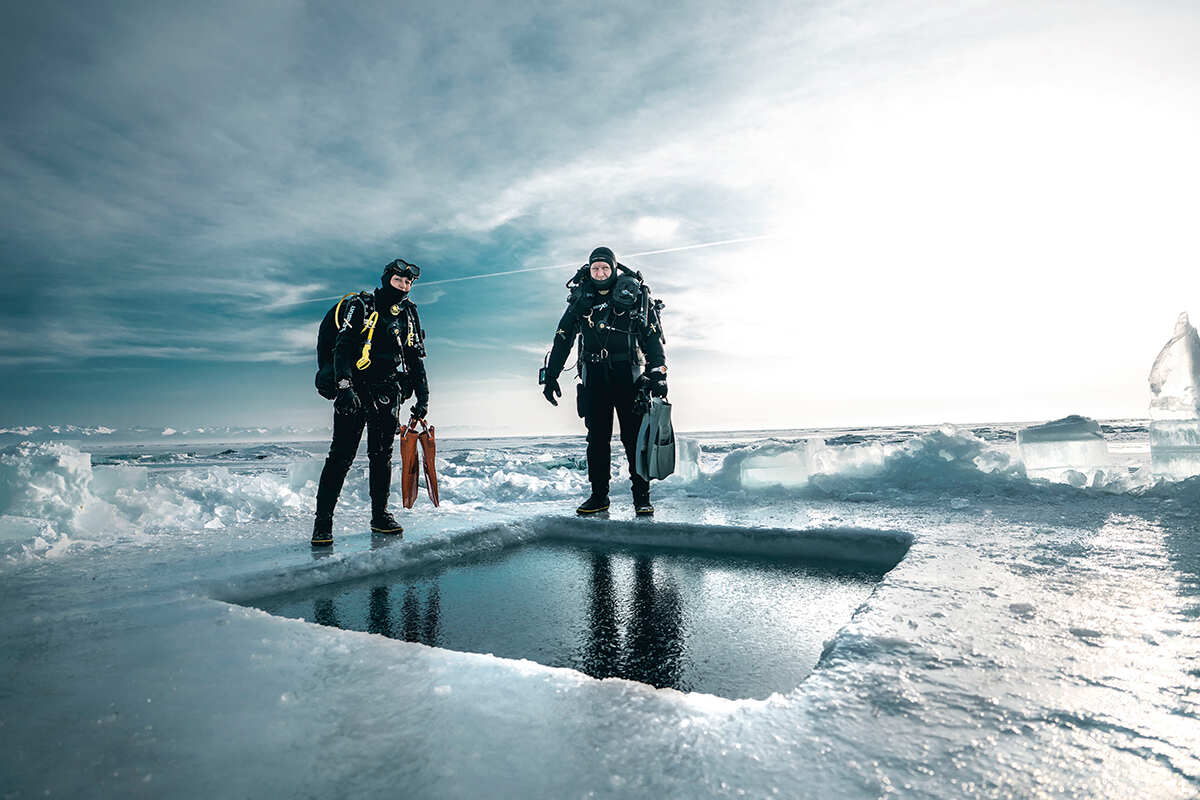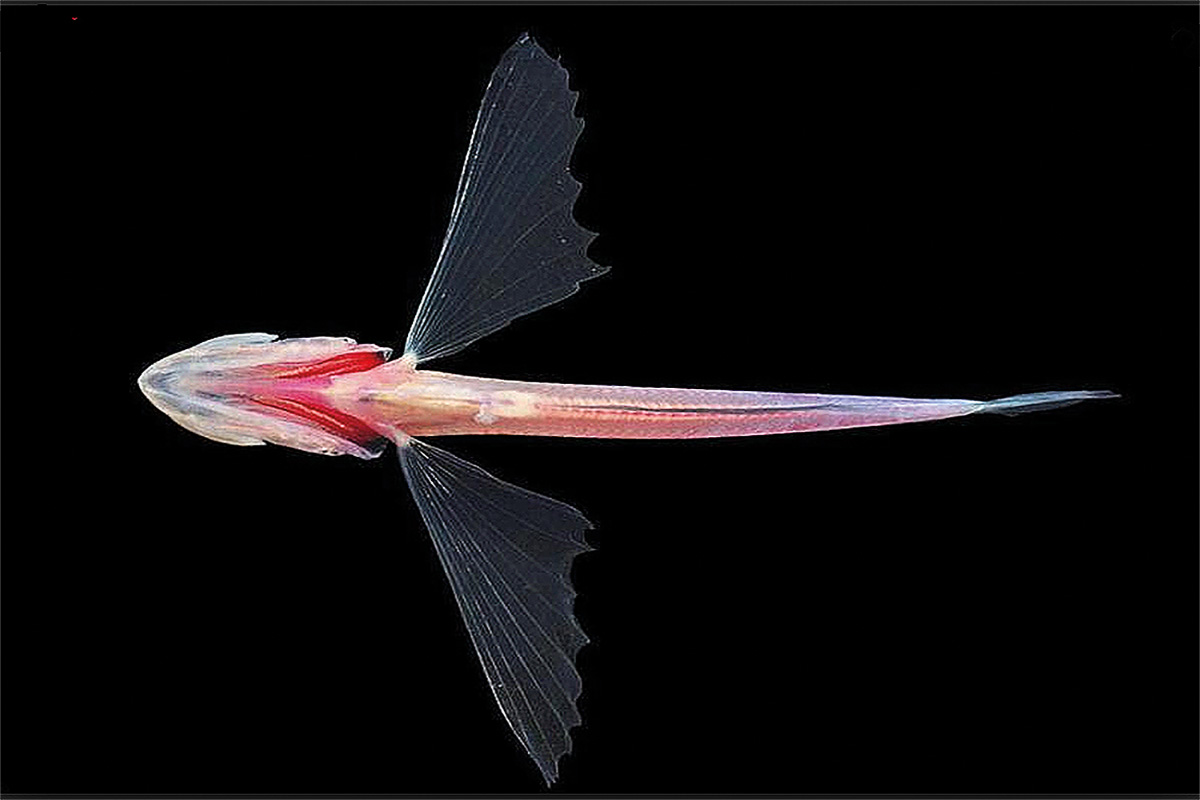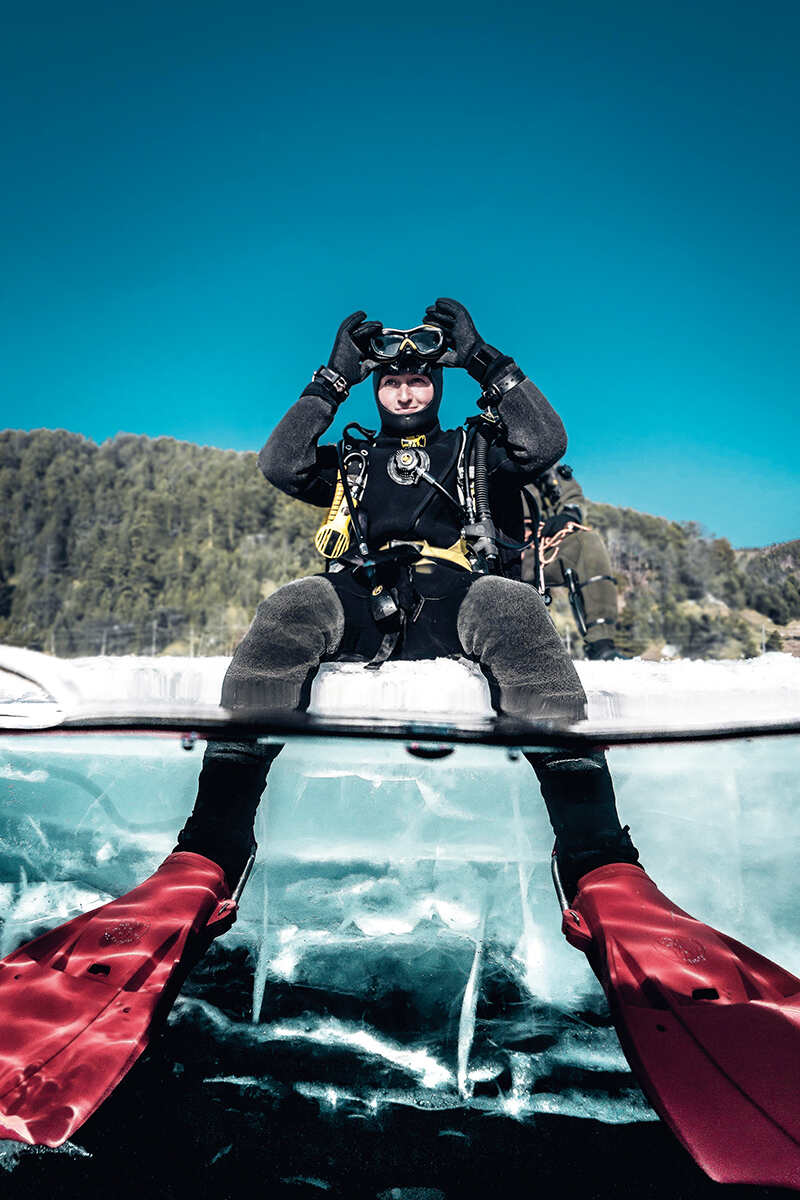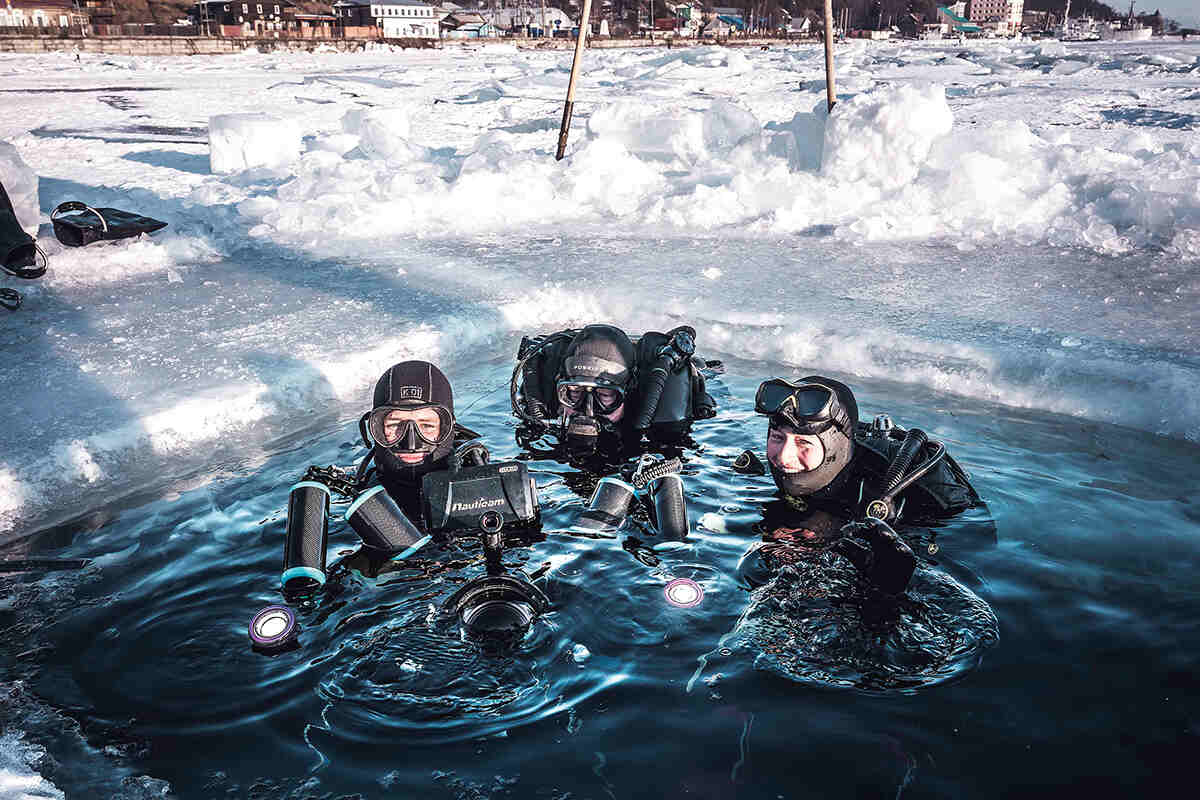
Alfred Minnaar heads to Siberia to learn how to ice dive, take some glorious photographs and eat too much sala (smoked pig fat)
By Alfred Minnaar
For an underwater photographer used to the coral reefs and balmy ocean around the tiny Indonesian island where I am based, plunging into the near-freezing freshwater of what is by many reckonings the world’s largest lake, in the remote expanses of Siberia, was about as far from my comfort zone as I could get.
However, I was easily persuaded by an old friend to join her in learning to ice dive. Maybe it was just the sheer beauty of Lake Baikal in winter that seemed so tempting. Perhaps it was that diving under its ice was the extreme opposite to all I knew, and that made the challenge irresistible. Whatever the reason, I was determined to get to this lake somewhere north of Mongolia and thousands of miles from anywhere, to do something I knew very little about, with people I had never met.
It was an insane idea; but then things just happened, as sometimes they do. At short notice, I was dispatched to Europe to attend the vast German diving show, BOOT. I discussed my crazy plan with Jonas Brant, CEO of dive gear manufacturer Poseidon, who just happened to be mates with a former Soviet military diver who runs one of the best dive clubs in the area, and, even more fortuitously, was also in Düsseldorf for the show. Next thing I knew, I was in a meeting with Andrey Dimitrevich, a stern-looking Russian with forearms the size of tree trunks, who spoke no English and seemed more than slightly bemused by my plans to do a photoshoot in Lake Baikal.
A gruff rumble of Russian was translated by his wife Olga: ‘He asks, “What is your experience of ice diving or even drysuit diving?”.’ Not wanting to admit the answer was precisely zero, I wittered on about the thousands of dives I had done in Indonesia – practically every day for the past six years, I stressed. I did, however, admit that I realised getting used to the cold would probably be my biggest problem. ‘Yes, that will be a big problem,’ came back the withering reply.

Somehow, I persuaded Andrey that while I might be a tad over-enthusiastic, I wasn’t clinically insane and, probably due more to his respect and trust for Poseidon than anything I said, he agreed to take us diving, but only if we underwent his own bespoke and, as I later realised, rigorous and extremely safe ice-diving course. A couple of days later (BOOT goes on forever) I met a German adventure sports videographer, Nicolai Deutsch, and persuaded him to join us, and ten days after that we off on a flight to Moscow and then a further 5,000km flight into the heart of Siberia. Lake Baikal beckoned.
The Baikal oilfish

THE BAIKAL OILFISH is the world’s deepest-living freshwater fish (ranges down to 500m). Its two species account for 70% of fish in the lake. It has no scales nor swim bladder. Almost half of its body consists of fat. It is inedible for humans, but is consumed by Baikal ringed seals. Its mouth is huge (1.5 times wider than its body). It is viviparous (live born) and consumes its siblings at birth
We were greeted by Sasha, whom I had first met more than a decade previously when were both poor ski instructors in Canada. A few years later, I persuaded her to join me in Gili Trawangan in Indonesia, where we trained her up as a divemaster. Since then, she had continued her global wandering before returning to her native Russia, and on a whim had discovered the stark beauty of Siberia in general and Lake Baikal in particular.
We landed at Irkutsk, the main city near the southern end of the lake. It had been known as the Paris of Siberia, with pretty wooden buildings and the impressive onion domes of Orthodox churches. Today it is still just as charming but with a few Soviet-era concrete tower blocks. However, we weren’t here to enjoy the architecture, and the next day it was straight into the classroom of Dive Center Sval which was, shall I say, idiosyncratic. A 9mm pistol lay on the desk, the knives on the table weren’t for eating and there were a few hand grenades scattered around. However, there was a whiteboard and a rebreather in the corner to make us feel at home. Andrey is from a military background, and he delivers his dive course with clipped precision peppered with sporadic moments of humour (all accompanied by a running English translation from the ever-helpful Olga). He told us that he had devised this course before TDI or PADI had any guidelines for ice diving, and while he can, and does, teach both those and other agencies, he insists on adding in all the extra experience he has accumulated over more than 40 years of diving in Russia.
Did you know?
• Lake Baikal is the deepest lake in the world, reaching 1,642m (17 big bens) with an average depth of 744m
• It is also the world’s largest lake by volume, 23,615 cubic kilometres of water – more than all five of the US Great Lakes combined
• It’s surface area of 31,722 sq km is the size of Belgium
• It contains 23% of the world’s supply of fresh surface water
• It is the world’s oldest lake, formed 25 million years ago
• It is home to more than 2,500 species of plants and animals, 60% endemic

A detailed explanation of the protocols of ice diving followed. He stressed that our first dive would not be under ice. I later found out that many of the other dive schools in the area, which offer quick ice-diving experiences, mainly for a booming Chinese market, are not so pernickety. In 20 years of operation, DC Sval has had a flawless safety record.
The next day was beautiful, crisp and sunny. The air temperature was minus eight degrees Celsius. The lake was spectacular. It was covered with a two-metre layer of remarkably clear ice – you could see through it to the water below, and it was decorated with a dizzying pattern of trapped air bubbles and dramatic cracks that stretched off into the far distance. Our first dive was a short drive away, to where the lake drains into the Angara River, and the ice cover was broken. It was my first drysuit dive and kitting up was slightly nerve-wracking.
After a quick recap on things we had gone through the day before, and a briefing about the dive, we got in. My first reaction was that it wasn’t too bad. I remembered Sasha telling me when she was persuading me to come, that if you had the right gear and everything fitted, then ice diving should not be cold. Sasha and I were buddied up with Andrey, and Nicolai was with another instructor. To avoid a free-flow, we could only breathe from our regulators once they were in the water, so we all dipped under to take that first breath. That was when it hit me. The contact of 1ºC water with the bare skin left exposed by my hood and mask was invigorating, to say the least. But we soon lost all sensation from our exposed faces, and the problem was solved. The first dive didn’t go too badly. We did some basic buoyancy tests and seemed to be getting the hang of it. I thought, this ice-diving lark shouldn’t be too difficult. How wrong was I and how poor was I in judging my own abilities! Andrey wasn’t quite as complimentary about our first efforts as my initial confidence suggested he might be. He simply thanked us for not being ‘complete crap’.

The next day we learned how to make what they call a ‘maine’ in the ice – that is, the hole from which you enter and, crucially, exit. Using probes, we established the exact depth of the ice and with chainsaws and various manual ice-cutting devices we took out layer after layer of ice. I quickly realised why Andrey had such muscular arms. It is crucial that you don’t break through to the water level until you are ready, as the whole process would be impossible if the maine flooded. When there was only a thin layer of ice left, we chipped and sawed around the edges, freeing a central block and then pushing that under the rest of the ice.
Next came a review of the safety system, and we got to practise using the ropes we had already tried out in the classroom. We were to dive in pairs, and there was always someone on the surface at the other end of the safety rope. You and your rope handler could communicate by a relatively simple series of tugs on the rope. There would also be a rescue diver ready to enter the water at a moment’s notice for the duration of the dives.
The dive site had magnificent ice formations just under the surface, a steep wall encrusted with green sponges, and a series of canyons to explore. At this stage I didn’t have a camera in my hands – I wanted to focus on the course. After each dive we would quickly get inside the dive hut, a wooden, two-roomed structure out on the ice, heated by a wood-burning oven. There were snacks and drinks, and Andrey would take us through our dive and discuss how we could improve.


The next day was to be our first with cameras. It was near the hut, but a bit further out on the lake and the water was a bit deeper. Here, the wall plunged down to 50m, and at 20m there was a small cave, which we thought would be a great spot for taking some photos and video. The plan was for Andrey to be our model, and we would both be accompanied by experienced divemasters. Sasha was going to be my safety person at the surface.
As soon as they handed me my camera, I deflated and started my normal routine of checking the camera. But I quickly realised all was not right and I was descending rapidly. I started inflating my BCD, but couldn’t get my buoyancy right and was bobbing up and down like a yo-yo. My divemaster gave me that look I had seen so many dive instructors give Discover Scuba Diving students. I was aghast. I knew I was messing up but couldn’t do much about it. This was probably my worst display of diving since my very first dive. It was awful – obviously, bad diving habits picked up in forgiving, warm, saltwater don’t go down so well in fresh, near-freezing water. My camera was way overweight with extra lights. I had not given the dive the necessary respect, and it was costing me dear. Sasha later told me there were so many bubbles coming up that they thought someone had a free-flow or even that one of our hoses had burst. Needless to say, for me the dive was a write-off and a huge embarrassment. Meanwhile, our videographer, with a neutrally buoyant camera and much better diving habits than mine, was doing exceptionally well.


After getting back inside the hut, I was amazed that Andrey and his colleagues didn’t seem that fazed by my appalling display, and just made a few practical suggestions on how to regain control of things. This was after some sala (smoked pig fat) and black tea. Then, we were invited to join them in the traditional banya (the much-loved Russian version of a sauna) which I soon realised was as important as the dive for my new friends. We were told: ‘Sala helps you survive and banya helps you to revive.’ The dive club has its own banya, which looked like a normal wooden cabin. Inside, it has three rooms. You strip off, wrap yourself in towels, don a daft felt hat, and cook yourself in the steam room. The ‘dry room’ is the place to relax, socialise and eat more sala, with freshly baked bread, followed by fresh fruit. For many Russians, the banya is also the place to enjoy a few shots of vodka. However, Andrey has a strict teetotal rule – absolutely no drinking on the day you dive or the day before (probably another reason for his 100-per-cent safety record). One banya tradition that was being followed was the beating of participants with birch branches. Andrey happily demonstrated exactly how it works with me as the victim! One of the club members confided in me with a big smile on his face, as he gently simmered, that really it was all about the banya, not the diving.
The next day was Saturday. In the 20 years of the club’s history, whatever the weather, members had gone for a dive every Saturday – even when once it reached minus 25ºC. Usually, Andrey’s divers would take a hivus (hovercraft) out to the dive sites, but it was a busy weekend, and they were all booked. Instead, we were going to drive across the ice. One safety rule worth knowing is never to wear a safety belt when driving over ice – if you hit a crack, you may want to get out of the car rather quickly. The driver’s ritual before heading off was to toss a handful of sweets out on the ice. I was told it was to appease the local deities and, as the driver had never had an accident, it must work.


rs, and a gaggle of divers inspecting the maine. We took turns gearing up around the cars before going on our dives. I had dropped two kilos off my weights, I was using another BCD which had an integrated weight system, and I had added some lift to my camera. Hopefully, things would go a little better this time around.
In fact, the dive went a lot better, although it was still far from perfect. The dive site was spectacular. At the start, it was less than 8m to the bottom and, as the lake bed shelved away, the formations on the underside of the ice became increasingly beautiful. In places, the ice was so clear, we could see the vehicles and other divers as they looked down at us: a topsy-turvy world where it was hard to tell up from down.

The next day was a different site. Here, there was a mound rising from the lake bed where Andrey had erected a Russian Orthodox cross to commemorate his late friend and colleague Andrey Sevov, with whom he had launched the club. The site was serene, with some small canyons carved into the rock formations as we descended. We dived for a few more days. Miraculously (in my case) we passed Andrey’s ice-diving course and took hundreds if not thousands of photographs and videos. We met many of the very welcoming members of the local diving community, ate too much sala, and had a wonderful time. All in all, it was a life-affirming and life-changing experience. As Dema, one of the divemasters, told us: ‘You dive in the tropics to see what is inside the ocean. You dive Lake Baikal to see what is inside yourself.’
Alfie says the best time of year for ice diving is February and March. DC Sval also runs excellent summer diving in the lake, with a camp each June attracting everyone from extreme tech divers to novices. To find out more contact Olga at neshina@yandex.ru or phone +7 395 229 50 51, or check out the Facebook page @svaldiving
- Going Beyond: Alfred Minnaar learns to cave dive - 27 October 2022
- Ice cool scuba diving in Lake Baikal - 8 September 2022
- A pirate’s life: the story of Raja Ampat’s Calico Jack - 16 June 2022


